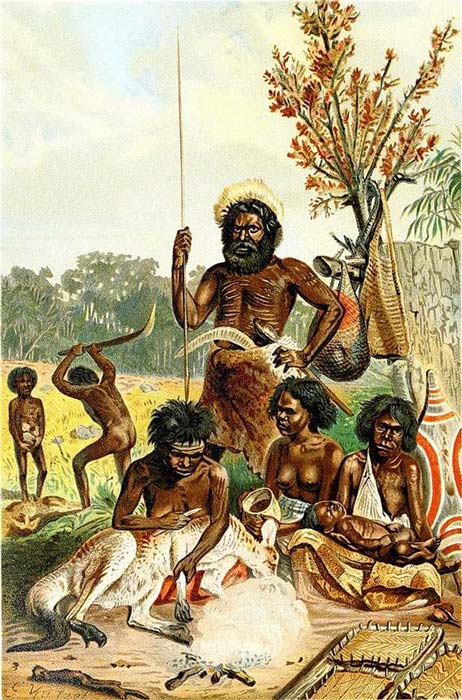
Meta-Study of Parramatta Reveals All About Sydney’s Pre-Historic Past
A team of archaeologists asked if Aboriginal population recovery in Australia was delayed after the Last Glacial Maximum? For answers, they analyzed archaeological evidence from Australia’s Parramatta River sand sheet. Formed 15 to 29 million years ago, the Parramatta River in Sydney, New South Wales, Australia, is the main tributary of Sydney Harbor, a branch of Port Jackson. The land adjacent to the Parramatta River was occupied for many thousands of years by Aboriginal peoples, who used the river as an important source of food and a place for trade.
In the new study, that was published on Science Direct, researchers looked at alluvial deposits in the Parramatta River that were initially formed around 60,000 years ago, and reworked between 20,000 and 5,000 years ago. The new meta-data analysis was a success, and in the words of the researchers, it: “fills an important gap in the Indigenous past of one of the oldest townships in Australia.”

An excavation at the corner of Charles and George Street revealed Indigenous and historic remains survived the construction of a factory here in the 1950s. The site has now been destroyed by subterranean car parking for apartments. (Jo McDonald CHM 2005 report / The Conversation)
The Parramatta River’s Deep History, Long Before The English
The city of Parramatta is located on the Parramatta River in Sydney’s geographical center. Famously, after the First Fleet of Europeans arrived at Port Jackson in 1788 AD, Parramatta became the first township established outside Sydney Cove’s penal colony. However, today, with its high- rise buildings, light rail and heavy-landscaping, aboriginal artifacts are seldom found along the Parramatta, which was at one time a bountiful hunting and fishing territory.
- Looking to the Stars of Australian Aboriginal Astronomy
- Oldest Bottle of Beer in the World Recovered from Shipwreck Inspires Recreation of Historic Brew
Having eradicated the indigenous Darug people from the fertile Cumberland Plain, an article in The Conversation explains that Parramatta became the agricultural “breadbasket of the early European colony.” This new study, however, takes us way back beyond colonial history to the Dream Time, when aboriginal hunters and fishers roamed the expansive riverbanks of the Parramatta.

An excavation at the corner of Charles and George Street revealed Indigenous and historic remains survived the construction of a factory here in the 1950s. The site has now been destroyed by subterranean car parking for apartments. (Jo McDonald CHM 2005 report / The Conversation)
A 60,000-year-old Ginormous Sand Sheet Full of Data!
The new study leaned heavily on New South Wales’s state planning legislation, which requires all new urban developments to perform archaeological surveys before construction begins. Over 40 such sites have been excavated over the past 15 years and the researchers published that “29% of these deposits” have been developed on over the past 15 years.
The paper explains that Paramatta’s urban center is built on a 3-meter-thick (9.8-feet-thick) layer of sand. This massive sand bar was deposited by giant floods and other extreme environmental conditions in the Parramatta River around 50,000-60,000 years ago, and it reformed continually until around 5,000 years ago. The study shows that between 20,000 and 30,000 years ago, during the last Ice Age (or Glacial Maximum) the sand was blown around and formed a 70 hectare (173 acres), or a roughly 100 football field sized sand sheet.

Sharks tooth ornament overlain on an image painted at Port Jackson of an Aboriginal man with fishing gear and fish teeth hair ornaments. Excerpt from a work by the Port Jackson Painter 1788-1792. (The Conversation)
They Even Found A Shark's Tooth Hair Piece
The sand bar was forming when the First Nations people arrived on the continent over 55,000 years ago (or so) and the paper says it serves archaeologists as an “archive of evidence” pertaining to early use of the landscape “in deep time.” Furthermore, the sand sheet offers outstanding data about “major climatic changes” in Australia’s past.
While the archaeologists have found what the new study calls “glimmers of evidence” for people using the sand bar over 50,000 years ago, artifacts like “grindstones, axe-heads, spear barbs, shark’s tooth hair piece and cooking hearths,” all demonstrate that the early hunters of Australia visited the Parramatta River region more frequently after the last Ice Age.

Aboriginal Australians, from Ridpath's Universal History. (Internet Archive Book Images / No restrictions)
The Sandy Birth Of Australian Trade Networks
The paper analyzed the results of three major archaeological projects on the Parramatta River sand sheet at George Street, Hassall and Wigram Streets, and in the grounds of the Bayanami School. All three sites showed “increased human use at a time of significant sea-level change.” The paper explains that between about 14,000 years ago when the Ice Age began to end and 9,000 years ago Australia’s sea level went from “125 meters (410 feet) below current levels to current levels.”
- Mathematician Finds Pythagorean Triples On Ancient Babylonian Tablet
- DNA Study Finds Aboriginal Australians are Oldest Civilization in the World
In conclusion, around 14,000 years ago, more than 2 million square kilometers (772,000 square miles) of melting ice turned into sea water and drove people off the continental shelf surrounding Australia, including from the Sydney Basin. Over the past 10,000 years, the paper shows “a massive increase in local site use and visitation” on the sand bar. This resulted in longer occupations and different trade and exchange networks, being formed for the first time in Australia.
Top image: Old image of Parramatta River by Broadhurst, William Henry, 1855-1927. Source: Public Domain
By Ashley Cowie















